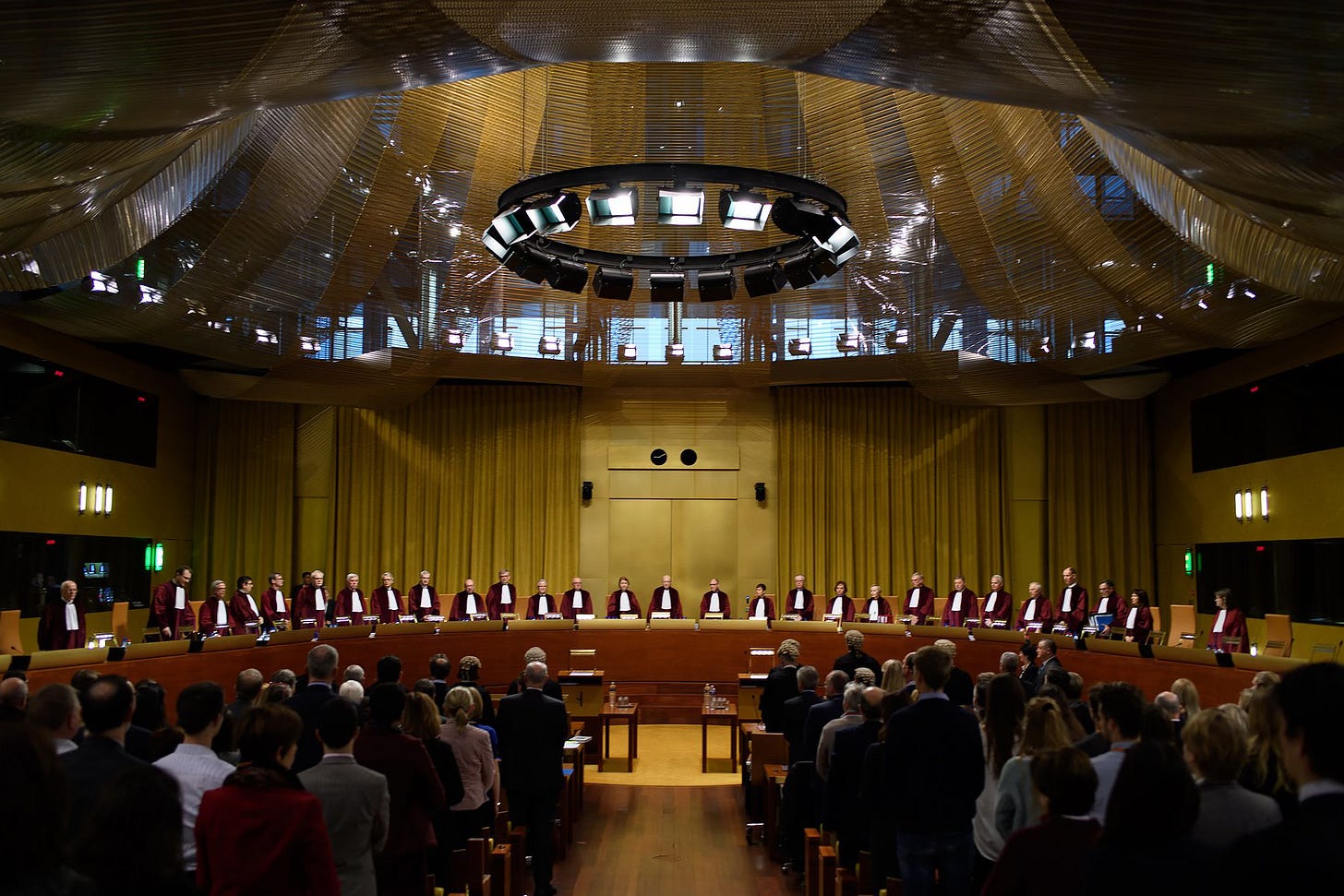Meet the New Boss of Religious Freedom
A Conversation with Andrea Pin on the Development of Religious Freedom Jurisprudence in Europe
“Religion is too vital a root and resource for democratic order and rule of law to be passed over or pushed out. Religious freedom is too central a pillar of liberty and human rights to be chiseled away or pulled down.”
-John Witte, Jr.-
One of the most impactful things I’ve heard on the state of religious freedom abroad is its connection to the way we cherish it at home. Speaking on a Conference Panel at Notre Dame, Nathaniel Hurd (Religious Freedom Institute) made this prediction, explaining that the promotion of freedoms at home has an undeniable effect on the way its value is imported abroad.
For the last few months, we’ve discussed the state of religious freedom at home by looking at the passage of laws across all 50 states with Mark David Hall (here) and hosting our inaugural first lecture in the John Witte, Jr. Lecture Series on Christianity & Law looking at the recent developments from the Supreme Court and what it portends for the future of religious freedom (here). Now, we turn abroad—considering the state of religious freedom in Europe by talking with an associate professor of law at the University of Padua, who has co-authored two great papers (Paper 1 and Paper 2) with John Witte, Jr. looking at the inchoate development of religious freedom jurisprudence within the European Union (EU).
In particular, the papers look at an interesting development within the Court of Justice for the European Union (CJEU or Court) and how it’s become a unique venue for considering religious freedom cases that intersect with economic freedom, labor relations, and social welfare, which by its design have always been the Court’s primary focus.
We discuss a number of interesting topics, including:
1. The non-binding nature of decisions from the European Court of Human Rights (ECtHR) and why the CJEU’s “direct effect doctrine” has grown more favorable giving its binding effect on EU party states;
2. The changing landscape (e.g., immigration, church scandal, demographics) in Europe that has helped fuel the revival of religious freedom debates in public life;
3. The role of the Advocate General (AG) in influencing the outcome of decisions before the CJEU and the Court’s preference for EU legal integration;
4. The “preliminary ruling procedure” that allows domestic courts to refer questions to the CJEU for resolution; and,
5. The role of the “neutrality principle” in undermining what Kathleen Brady called the “distinctiveness of religion” in favor of treating religious freedom as only one right in a balancing mechanism.
While my conversation with Andrea is short, the papers are detailed and well-written. They discuss the difference between the ECtHR and the CJEU (especially Paper 2), delving deeper into the developing religious freedom jurisprudence that has the potential for creating an immensely different Europe in the coming decade.
While we nerd out on procedure, the cases themselves are particularly interesting. Cases involving employees seeking to wear visible displays of their religion (akin to the Supreme Court’s decision in EEOC v. Abercrombie & Fitch) and the deference the CJEU provides to employers to implement “neutral policies.” Cases that involve the hiring of unaffiliated workers by religious institutions (akin to the Supreme Court’s decision in Our Lady of Guadalupe School v. Morrissey-Berru) and the latitude that the CJEU allows for church autonomy. Cases that involve the status of refugees and asylum seekers; religious divorces governed by internal codes of religious adjudication; religious slaughtering of animals and the need for mitigating suffering; and many more.
The procedure is interesting, but the application of these steps in adjudicating complex topics of competing interests is even more interesting considering how many of the fact-patterns strike an uncanny resemblance to cases at home. There is a deep need for practical wisdom and sensible legislation to safeguard the values of first principles rooted in the celebration of divine standards. As this excellent piece for the Canopy Forum explains:
Human rights—including religious freedom rights—are not just about individuals, and nor are they the offspring of fluctuating sensitivities. They are sophisticated legal claims with deep historical, religious, and philosophical roots, with a strong lineage and powerful ramifications, and should be treated as such. Balancing competing interests is always hard. Doing it in a nonpartisan way in a polarized age is proving to be even harder, and requires a principled approach to protect the interests at stake and the credentials of the institutions involved in the process.
Those are commendable goals! Since Courts too often find themselves unable to reconcile deeply held convictions without drawing superficial lines along ideological preferences, finding those who can avoid this temptation or, better yet, those who can navigate these differences in open contest is essential.
Let us all help in this work by seeking to love God with all our mind and then using that offering of worship to better love our neighbors, whoever they are.
Enjoy!
Andrea Pin is the Associate Professor of Comparative Public Law at the University of Padova Law School and a senior fellow in the Center for the Study of Law and Religion at Emory University.





